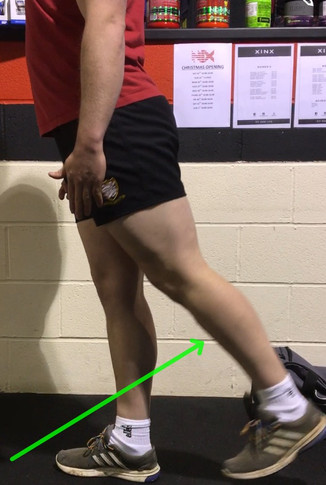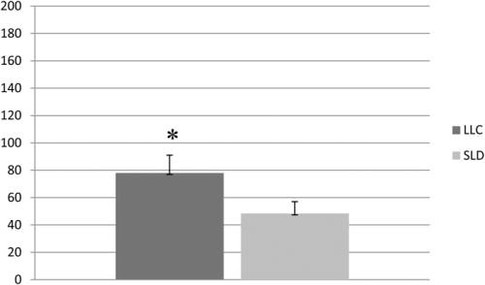Hamstring Curls for Sprinters? Muscular Development vs Coordination Concerns
Introduction
It is widely recognised that the hamstrings are critical to speed. For this reason, exercises that develop the hamstrings are commonly recommended for sprinters. Choosing which exercises are the most appropriate can raise various issues for the strength and conditioning coach. These decisions are important because of how prone the hamstrings are to soreness and their vulnerability to injury.
Hamstring curls are commonly recommended as exercises to improve sprint performance[1][2][3]. The following article is going to look at the positives and negatives of hamstring curls as a sprint specific exercise and follow with some general recommendations for the practicing coach.
Anatomy
We will begin by examining the basic anatomy of the hamstrings. There are four different muscles that make up the hamstrings. These can be divided into the lateral and medial hamstrings. The lateral hamstrings include the biceps femoris long and short head, which can be seen on the left of the below diagram. The medial hamstrings encompass the semimembranosus and the semitendinosus muscles which can be seen on the right of the below diagram.
Figure 1: Hamstring Anatomy [4]

As can be seen from this diagram, the hamstrings in most part (except for the biceps femoris short head) are biarticular muscles. This means that they cross both the hip joint and the knee joint. As such concentric contraction of the hamstrings can cause both hip extension and knee flexion (see below). Due to this, exercises where the primary aim is to generate hip extension (RDL, Good morning) or knee flexion (hamstring curls) or both (Glute Ham Raises, Swiss Ball Hamstring Curls) are generally recommended for hamstring development.
Fig 2a) Hip extension
Fig 2 b).Knee Flexion
Exercise Selection Considerations
When selecting exercises, there are numerous different approaches one can take. These encompass the following:
Physiological capacity approach: Force development, Power Development, Velocity development etc.
Movement quality approach: Coordination of the muscle groups in order to develop a specific skill (aka running drills).
Structural development approach: Hypertrophy, Tissue Tolerance.
My personal approach is usually to focus on improving a physiological capacity or structural development, and from this standpoint I will look at how to make this more specific to the individual’s sport. This is primarily due to my belief that as a strength and conditioning coach you must do something that can’t be achieved by the technical coach.
Hamstring Curl
With these considerations in mind, I will focus on this from a structural development perspective. This is relevant to practitioners because in traditional S&C programs the bulk of physiological development will be taken up by compound movements such as powerlifting and Olympic lifting. Developing the hamstrings structurally may be relevant for sprinters as we want to increase tolerance of the muscles to work in order to develop sufficient durability to cope with sporting demands. We may also want to develop the hamstrings to provide a more favorable quad to hamstring ratio, as this has been shown to be a good predictor of sprint running performance across differing distances.[5]
When looking to develop a muscle group, a good method for assessing muscular activation is to use EMG studies. These studies tend to demonstrate that hamstring curls create greater overall hamstring activation than exercises that rely on hip extension. This can be seen on the below diagram from a recent Schoenfeld study[6].
Fig 3) Muscle Activation (expressed as a percentage of maximum voluntary contraction) in different areas of the hamstrings in the lying leg curl (LLC) and the straight leg deadlift (SLD).
Fig 3a) Lower Lateral Hamstrings Fig 3b) Lower Medial Hamstrings
Fig 3c) Upper Lateral Hamstrings Fig 3d) Upper Medial Hamstings
This type of evidence seems to suggest that hamstring curl exercises would be more effective for structural development in the hamstrings than hip dominant exercises.
Coordination concerns
As mentioned earlier, it is at this stage where I would examine the specific coordination of the skill I am trying to improve and see whether there is a methodology that can combine hamstring development with specific movement patterns to enable a greater training effect. We must therefore look at the role of the hamstring’s during sprinting. In this example we will focus specifically on their relationship with the rectus femoris during sprinting.
Before we do this it’s necessary to define some terms:
Agonist: This refers to a muscle that moves a part of the body directly e.g. a bicep for a bicep curl
Antagonist: This is a muscle that directly opposes the contraction of another muscle e.g. a tricep in a bicep curl.
Moment Arm: This is the distance between the axis of a joint and the force acting upon that joint.
The above terms can be used to describe what is known as Lombard’s Paradox. This term can be used to describe the actions of the rectus femoris and the hamstrings during leg extension. This action is described as a paradox as the muscle actions seem to directly oppose one another. For example, the hamstring muscles act as agonists to extend the hip and flex the knee, but also act as antagonists to prevent knee extension and hip flexion (fig 4b). Which is in direct opposition to the rectus femoris which conversely extends the knee and flexes the hip whilst preventing knee flexion and hip extension (Fig 4a).
Fig 4a) Actions of the Rectus Femoris
Fig 4b) Actions of the Hamstrings
The reason these two opposing movements do not cancel each other out is due to the relative moment arms around the joint. As is displayed in Figure 1 the hamstrings attach to the hip on the tuberosity of ishium this is further away from the hip joint than the attachment of the rectus femoris which attaches at the anterior inferior iliac spine and the illium. Conversely at the knee the rectus femoris attaches at the patella tendon which provides a greater moment arm to the structures of the lower leg whereas the hamstrings attach further down the lower leg (at the medial surface of the tibia, medial condyle of the tibia and the lateral condyle of the tibia respectively). Some videos showing the attachments and movements of the rectus femoris and the hamstring muscles can be found here:
This allows for this paradox to exist and increases the velocity of leg extension. I will use the analogy to explain this further.
Analogy
The analogy I will use is that of a single pain revolving door such as can be seen in figure 5a. This shall be displayed from above in the image in figure 5b. The door represents the upper leg, with the right side of the door representing the knee and the left side of the door representing the hip. This should demonstrate why the muscles are able to generate more force over certain joints.
Fig 5a) [7] Fig 5b)

To understand the interrelationship of the hamstrings and the rectus femoris we must add some more detail to our analogy. Firstly, we will add a pair of handles on either side of the door and then secondly, we will add two individuals who will represent the hamstrings (person H (purple h)) and the rectus femoris (person R) respectively.
In the first instance both individuals are going to pull on the handles directly in front of them to attempt to open the door. As is demonstrated in figure 6a) if both people are the same strength the door will not move. It is important to note that in all the situations listed the individual must pull equally on both handles. This first situation (Fig 6a) represents what would happen if the moment arm was similar between both muscles.
Fig 6a)

In the next situation, we will move the handles so that each pair is moved closer to either the right or left side of the door. In this scenario, even if both people pull the door the door will still rotate round due to the differences in leverage (Fig 7).

Fig 7: Because of the difference in leverage (a) rotation will occur when both H and R pull simultaneously (b).
This allows for the door to move faster than if just person H pulled on the orange handles or person R pulled on the yellow ones. This is can be likened to the interrelationship of the rectus femoris and hamstrings which allows for rapid leg extension.
Coordination concerns
Now we have examined Lombard’s paradox and have a reasonable analogy to explain this, we can look at how hamstring curls might affect this relationship. Because of the specific nature of strength[8][9][10] hamstring curls will increase the ability of the hamstring to produce force at the knee, where it is acting antagonistically against the rectus femoris. This is the equivalent of making the ‘person H’ stronger on their right arm in our analogy. Theoretically, this would add unnecessary resistance to the quadriceps at the knee but more importantly this coordination pattern may put unnecessary strain on the hamstrings themselves which could lead to injury. Whilst there has been little research to verify this theory certain experts such as Frans Bosch have echoed this sentiment:
“Training the hamstrings in a manner that is incompatible with their structure and function will prove ineffective and may cause injury. One is therefore advised not to exercise with leg-curl equipment.’’[9]
Conclusions
In conclusion, exercises involving concentric hamstring curls have been shown to generate more hamstring activity than more hip dominant movements. This may be very beneficial for building muscle and strength in the hamstring musculature. However, when we consider the interrelationship of the hamstrings with the rectus femoris during leg extension movements such as sprinting issues arise. During sprinting the correct coordination between these two muscles may be more important than overall hamstring size and strength. Because of these reasons, I would focus my hamstring training around hip dominant movements such the Romanian Deadlift and Good Morning.

References


































